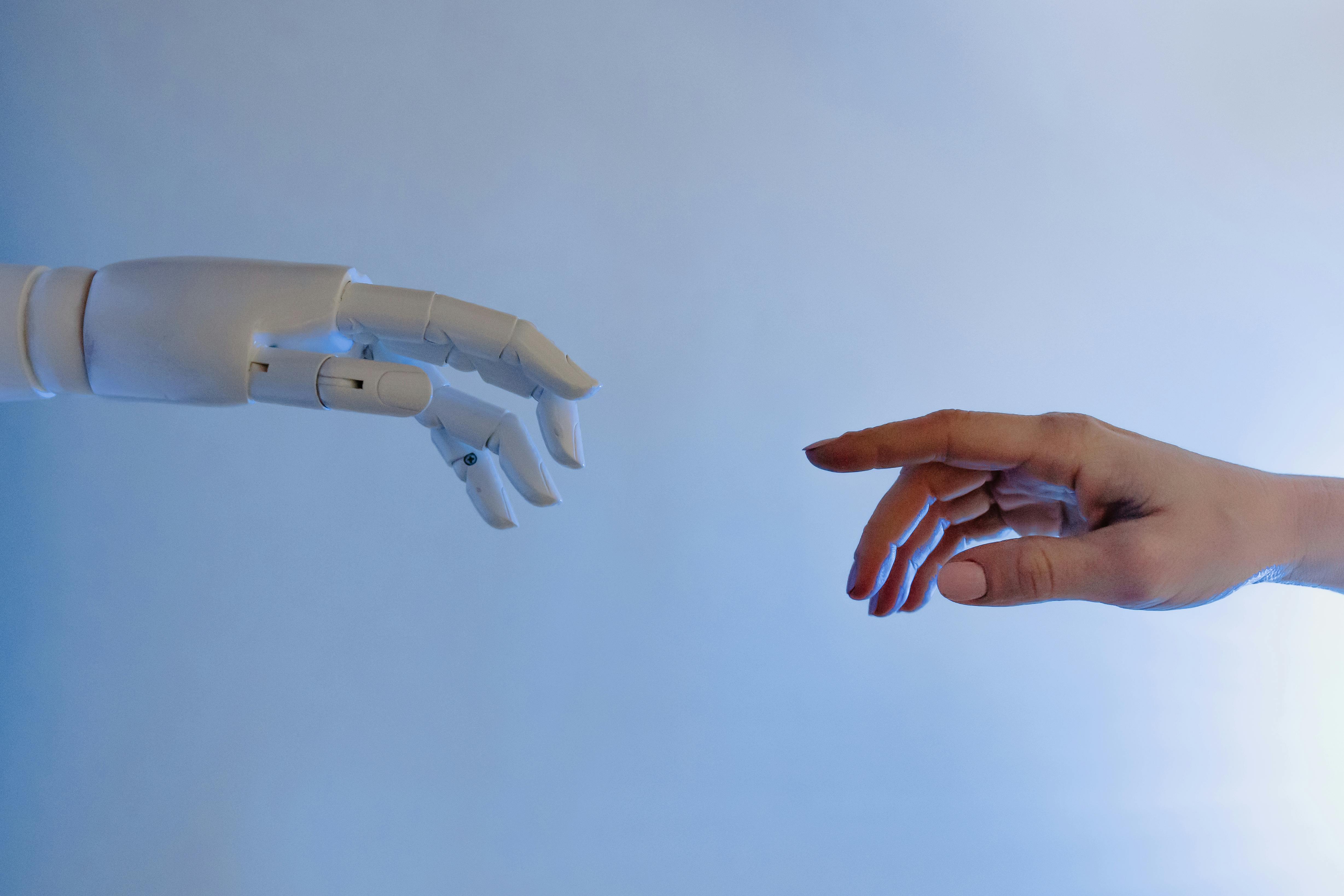
The journey from simple perceptrons to sophisticated deep neural networks represents one of the most remarkable progressions in the history of computer science and artificial intelligence. This evolution, spanning over six decades, has transformed machine learning from a theoretical curiosity into the driving force behind modern AI applications that touch every aspect of our daily lives. Understanding this progression is crucial for grasping how we arrived at today's AI capabilities and where we might be heading next.
The Genesis: McCulloch-Pitts Neurons and the Birth of Neural Computing
The story begins in 1943 with Warren McCulloch and Walter Pitts, who published "A Logical Calculus of the Ideas Immanent in Nervous Activity." This groundbreaking paper introduced the first mathematical model of a neuron, laying the theoretical foundation for all neural network research that would follow. The McCulloch-Pitts neuron was elegantly simple: it received binary inputs, applied weights to them, summed the results, and output a binary decision based on whether the sum exceeded a threshold.
While primitive by today's standards, this model captured something profound about biological neural computation. It demonstrated that networks of simple computational units could, in principle, perform any computation that a digital computer could perform. This insight established neural networks as a legitimate computational paradigm, even though the technology to implement them effectively was still decades away.
The McCulloch-Pitts model introduced several concepts that remain central to neural networks today: weighted connections between nodes, threshold activation functions, and the idea that complex behaviors could emerge from the interaction of simple computational units. However, these early models lacked learning mechanisms—the weights and thresholds had to be set manually by the programmer.
The Perceptron: Learning Comes to Neural Networks
The next major breakthrough came in 1958 when Frank Rosenblatt introduced the perceptron at Cornell University. Building on the McCulloch-Pitts foundation, Rosenblatt added something revolutionary: a learning algorithm. The perceptron could automatically adjust its weights based on training examples, gradually improving its performance through experience.
Rosenblatt's perceptron learning algorithm was elegantly simple. When the perceptron made an incorrect prediction, it would adjust its weights in a direction that would make the correct prediction more likely in the future. This process, repeated over many training examples, allowed the perceptron to learn to classify inputs into different categories.
The capabilities of the early perceptron were impressive for its time. It could learn to recognize simple patterns, classify handwritten characters, and even navigate mazes. Rosenblatt was so confident in the potential of his invention that he famously predicted that perceptrons would soon be able to "recognize people and call out their names, instantly translate speech in one language to speech and writing in another language, and inform their owners about stocks to buy and sell."
However, the perceptron had fundamental limitations that wouldn't become apparent until later. It could only learn linearly separable patterns—problems where the different classes could be separated by a straight line in the input space. For many real-world problems, this constraint was severely limiting.
The First Winter: Minsky and Papert's Critique
The limitations of perceptrons were rigorously analyzed and publicized by Marvin Minsky and Seymour Papert in their 1969 book "Perceptrons: An Introduction to Computational Geometry." Their mathematical analysis showed that single-layer perceptrons could not solve even simple problems like the XOR (exclusive or) function, where the output is true if one input is true but not both.
This critique was devastating to the neural network field. Minsky and Papert demonstrated that many problems of interest could not be solved by perceptrons, and they expressed skepticism about whether multi-layer networks could overcome these limitations. While they acknowledged that multi-layer perceptrons might be more powerful, they argued that no one had developed effective algorithms for training such networks.
The impact of this critique went far beyond its technical content. It coincided with broader disillusionment about AI progress and contributed to a significant reduction in funding for neural network research. This period, now known as the "AI Winter," saw most researchers abandon neural networks in favor of symbolic AI approaches that seemed more promising at the time.
The Underground Years: Keeping the Faith
Despite the prevailing pessimism, a small community of researchers continued to work on neural networks throughout the 1970s. These researchers, including John Hopfield, Teuvo Kohonen, and Stephen Grossberg, made important theoretical advances that would later prove crucial for the revival of the field.
Hopfield networks, introduced in 1982, demonstrated that neural networks could serve as associative memories, storing and retrieving patterns in ways that resembled human memory. Kohonen's self-organizing maps showed how neural networks could learn to represent high-dimensional data in lower-dimensional spaces without supervision. Grossberg's adaptive resonance theory explored how neural networks could learn continuously without forgetting previously learned information.
Perhaps most importantly, several researchers were making progress on the fundamental problem identified by Minsky and Papert: how to train multi-layer neural networks. Paul Werbos had actually derived the backpropagation algorithm in his 1974 PhD thesis, though this work received little attention at the time. Other researchers, including David Parker and Yann LeCun, independently developed similar ideas throughout the early 1980s.
The Renaissance: Backpropagation and Multi-Layer Networks
The neural network field experienced a dramatic revival in the mid-1980s, largely due to the popularization of the backpropagation algorithm by David Rumelhart, Geoffrey Hinton, and Ronald Williams in their seminal 1986 paper "Learning representations by back-propagating errors." While the algorithm had been discovered earlier, this paper provided a clear explanation of how it worked and demonstrated its effectiveness on a variety of problems.
Backpropagation solved the fundamental problem of training multi-layer neural networks by providing a way to calculate how each weight in the network should be adjusted to reduce prediction errors. The algorithm works by propagating error signals backward through the network, allowing each layer to determine its contribution to the overall error and adjust its weights accordingly.
This breakthrough enabled the creation of neural networks with hidden layers—intermediate layers between the input and output that could learn internal representations of the data. These multi-layer perceptrons (MLPs) could solve the XOR problem that had stymied single-layer perceptrons and could approximate any continuous function given enough hidden units.
The capabilities unlocked by backpropagation were remarkable. Neural networks could now learn complex non-linear mappings, recognize sophisticated patterns, and solve problems that had previously seemed intractable. Applications began to emerge in areas like speech recognition, handwriting recognition, and financial prediction.
Specialized Architectures: Tailoring Networks to Problems
Convolutional Neural Networks: Learning to See
One of the most significant developments in neural network architecture came from Yann LeCun's work on convolutional neural networks (CNNs) in the late 1980s and early 1990s. Inspired by the structure of the visual cortex, CNNs introduced the concepts of local connectivity, weight sharing, and pooling operations that made them particularly well-suited for image recognition tasks.
Unlike fully connected networks where every neuron is connected to every neuron in the previous layer, CNNs use small filters (kernels) that scan across the input image, detecting local features like edges, corners, and textures. By sharing these filters across the entire image, CNNs could recognize patterns regardless of their location—a property called translation invariance.
LeCun's LeNet architecture, developed for recognizing handwritten digits, demonstrated the power of this approach. By the 1990s, CNNs were being used in practical applications like reading zip codes on mail and processing bank checks. However, their full potential wouldn't be realized until decades later when increased computational power and larger datasets enabled much deeper and more sophisticated architectures.
Recurrent Neural Networks: Memory and Sequence Processing
While feedforward networks excelled at pattern recognition, many real-world problems involve sequential data where context and timing matter. Recurrent neural networks (RNNs), which include connections that create cycles in the network, were developed to address these temporal processing challenges.
RNNs maintain internal memory states that are updated as they process each element in a sequence. This allows them to learn patterns that span multiple time steps and to generate sequences based on learned patterns. Early applications included speech recognition, natural language processing, and time series prediction.
However, basic RNNs suffered from the "vanishing gradient problem"—difficulty learning long-term dependencies due to gradients that become exponentially smaller as they are propagated backward through time. This limitation would later be addressed by specialized RNN architectures like Long Short-Term Memory (LSTM) networks and Gated Recurrent Units (GRUs).
The Second Winter and the Seeds of Revival
Despite the progress made with backpropagation and specialized architectures, neural networks fell out of favor again in the 1990s. This second "AI Winter" was driven by several factors: the success of alternative machine learning approaches like support vector machines and random forests, the computational limitations of available hardware, and the difficulty of training very deep networks.
Support vector machines, in particular, offered many advantages over neural networks of the time. They had strong theoretical foundations, required less computational power to train, and often performed better on small datasets. The machine learning community largely embraced these alternative approaches, viewing neural networks as outdated and superseded.
However, beneath the surface, important developments were continuing. Geoffrey Hinton and his students continued to push the boundaries of neural network research, developing new training techniques and exploring unsupervised learning approaches. The advent of Graphics Processing Units (GPUs) was beginning to provide the computational power needed for larger networks, though this potential wasn't yet widely recognized.
The Deep Learning Revolution
The Perfect Storm: Data, Compute, and Algorithms
The modern deep learning era began around 2006-2012 with the convergence of three critical factors: the availability of large datasets, dramatic increases in computational power, and algorithmic innovations that made training deep networks practical.
The internet had created vast repositories of labeled data—millions of images with descriptions, text corpora spanning multiple languages, and user behavior data from web interactions. This data abundance provided the fuel that deep learning algorithms needed to learn complex patterns.
Meanwhile, the rise of GPUs for scientific computing provided the computational horsepower necessary to train large neural networks. GPUs, originally designed for computer graphics, turned out to be ideal for the parallel matrix operations that dominate neural network training. This hardware advancement reduced training times from months to days or hours.
On the algorithmic side, researchers developed new techniques for training deep networks effectively. These included better weight initialization strategies, new activation functions like ReLU (Rectified Linear Unit), and regularization techniques like dropout that prevented overfitting.
The ImageNet Moment
The deep learning revolution was crystallized in 2012 when Alex Krizhevsky, Ilya Sutskever, and Geoffrey Hinton's AlexNet architecture won the ImageNet Large Scale Visual Recognition Challenge by a massive margin. Their CNN reduced the error rate from 26% to 15%, a improvement so dramatic that it stunned the computer vision community.
AlexNet demonstrated several key principles that would define the deep learning era: deeper networks with more parameters could learn more sophisticated representations, GPU acceleration made training such networks practical, and large datasets could support much more complex models without overfitting.
The impact was immediate and transformative. Computer vision researchers abandoned traditional feature engineering approaches in favor of end-to-end learned representations. The success spread to other domains—speech recognition, natural language processing, and game playing all saw dramatic improvements from deep learning approaches.
The Era of Unprecedented Scale
Going Deeper: Advances in Architecture Design
Following AlexNet's success, researchers embarked on a quest to build ever-deeper neural networks. However, they soon discovered that simply stacking more layers didn't always improve performance—very deep networks suffered from degradation problems where performance actually got worse as depth increased.
The breakthrough came with ResNet (Residual Networks) in 2015, which introduced skip connections that allowed gradients to flow directly through the network. This innovation enabled the training of networks with hundreds of layers, achieving unprecedented performance on image recognition tasks. ResNet demonstrated that with the right architecture design, depth could consistently improve performance.
Other architectural innovations followed: DenseNet used dense connectivity patterns to improve feature propagation, Inception networks used multiple filter sizes in parallel to capture features at different scales, and EfficientNet systematically scaled up all dimensions of the network (depth, width, and resolution) for optimal performance.
Attention Mechanisms and Transformers
Perhaps the most significant architectural innovation of the 2010s was the attention mechanism, which allowed neural networks to focus on relevant parts of their input when making decisions. Originally developed for machine translation, attention mechanisms enabled much more effective processing of sequential data.
The culmination of this line of research was the Transformer architecture, introduced in the landmark paper "Attention Is All You Need" in 2017. Transformers dispensed with recurrent connections entirely, relying solely on attention mechanisms to model sequential dependencies. This design was more parallelizable and could capture long-range dependencies more effectively than RNNs.
Transformers revolutionized natural language processing and beyond. They enabled the development of large language models like BERT, GPT, and T5 that achieved human-level performance on many language understanding tasks. The same architecture also found success in computer vision with Vision Transformers and in other domains requiring sophisticated pattern recognition.
Modern Frontiers: Foundation Models and Beyond
The Scaling Hypothesis
One of the most remarkable discoveries of the modern deep learning era is the scaling hypothesis—the observation that neural network performance continues to improve predictably as models get larger, datasets grow, and computational resources increase. This has led to a race to build ever-larger models, with state-of-the-art language models now containing hundreds of billions of parameters.
These large-scale models, often called foundation models, demonstrate emergent capabilities that weren't explicitly programmed. They can perform few-shot learning, engage in complex reasoning, and transfer knowledge across diverse domains. The scaling hypothesis suggests that many AI capabilities may emerge naturally from scale rather than requiring specialized architectural innovations.
Multimodal and Universal Architectures
The latest frontier in neural network development involves creating unified architectures that can process multiple types of data—text, images, audio, and video—within a single model. These multimodal systems can understand relationships between different modalities and perform tasks that require cross-modal reasoning.
Examples include CLIP, which learns to associate images with text descriptions, and GPT-4, which can process both text and images. These systems point toward more general forms of artificial intelligence that can understand and reason about the world through multiple sensory channels, much like humans do.
Challenges and Future Directions
Efficiency and Sustainability
As neural networks have grown larger, concerns about their computational requirements and environmental impact have intensified. Training the largest models requires enormous amounts of energy and computational resources, raising questions about the sustainability of current scaling trends.
Researchers are exploring various approaches to improve efficiency: neural architecture search to find more efficient designs, model compression techniques to reduce model size without sacrificing performance, and specialized hardware designed specifically for neural network computation. The goal is to maintain the benefits of scale while reducing computational costs.
Interpretability and Explainability
As neural networks become more powerful and are deployed in high-stakes applications, understanding how they make decisions becomes increasingly important. The "black box" nature of deep neural networks makes it difficult to understand why they produce particular outputs, limiting their use in domains where explainability is crucial.
Research in neural network interpretability is exploring various approaches: attention visualization to show what parts of the input the model focuses on, feature visualization to understand what patterns networks detect, and causal analysis to understand the relationships between inputs and outputs. This work is essential for building trustworthy AI systems.
Robustness and Safety
Modern neural networks, despite their impressive capabilities, can be surprisingly fragile. They can be fooled by adversarial examples—carefully crafted inputs designed to cause misclassification—and may fail catastrophically when encountering data that differs from their training distribution.
Improving the robustness and safety of neural networks is an active area of research. Techniques include adversarial training to improve resistance to attacks, uncertainty quantification to help models recognize when they're uncertain, and formal verification methods to provide mathematical guarantees about model behavior.
The Biological Connection: Lessons from Neuroscience
Throughout their evolution, artificial neural networks have maintained a complex relationship with their biological inspiration. While early models were directly inspired by neurons and brain circuits, the most successful architectures have often diverged significantly from biological reality.
However, recent research is revealing surprising connections between artificial and biological neural networks. Studies have shown that trained CNNs develop representations similar to those found in the visual cortex, and that the hierarchical processing in deep networks mirrors the organization of biological sensory systems.
This convergent evolution suggests that both artificial and biological systems may be discovering similar solutions to fundamental computational problems. Understanding these connections could provide insights for both neuroscience and artificial intelligence, potentially leading to new architectures inspired by brain circuits and new theories of biological intelligence.
Looking Forward: The Next Evolutionary Steps
As we look to the future, several trends are likely to shape the next phase of neural network evolution. Neuromorphic computing, which implements neural network computations using brain-inspired hardware, could dramatically improve energy efficiency. Quantum neural networks might leverage quantum computing principles to solve certain problems more efficiently than classical networks.
Perhaps most intriguingly, we may see the development of neural networks that can modify their own architectures, evolving and adapting to new tasks without human intervention. These self-modifying networks could represent the next major evolutionary leap, moving from hand-designed architectures to systems that can design themselves.
Conclusion: From Simple Beginnings to Infinite Possibilities
The journey from McCulloch-Pitts neurons to modern deep learning systems represents one of the most remarkable progressions in the history of science and technology. What began as a simple mathematical model of neural computation has evolved into sophisticated systems that can recognize images, understand language, play games at superhuman levels, and even generate creative content.
This evolution has been marked by periods of excitement and disappointment, breakthrough discoveries and prolonged winters, but the overall trajectory has been one of exponential progress. Each generation of researchers has built upon the work of their predecessors, gradually solving the fundamental challenges that limited earlier systems.
Perhaps most remarkably, we appear to be still in the early stages of this evolution. The scaling hypothesis suggests that current architectures have significant room for growth, and emerging technologies like quantum computing and neuromorphic hardware could enable entirely new types of neural computation.
The story of neural networks is ultimately a story about the power of persistence, collaboration, and incremental progress. No single breakthrough created modern AI—instead, it emerged from decades of patient work by researchers who believed in the potential of neural computation even when others had given up hope.
As we stand on the threshold of artificial general intelligence, it's worth reflecting on how far we've come. The perceptron that could barely solve linearly separable problems has evolved into systems that can engage in sophisticated reasoning, understand multiple modalities, and demonstrate creativity. The next chapters of this story promise to be even more remarkable than those that came before.
The evolution from perceptrons to deep neural networks is not just a technical tale—it's a testament to human ingenuity, scientific progress, and the power of simple ideas to grow into world-changing technologies. As we continue to push the boundaries of what's possible with neural computation, we carry forward the legacy of all those who believed that machines could learn, think, and perhaps even dream.




